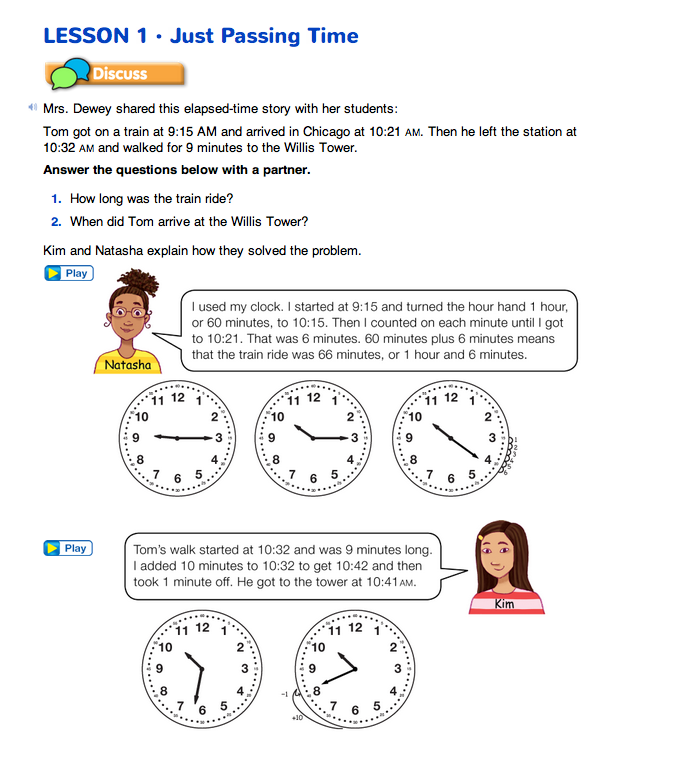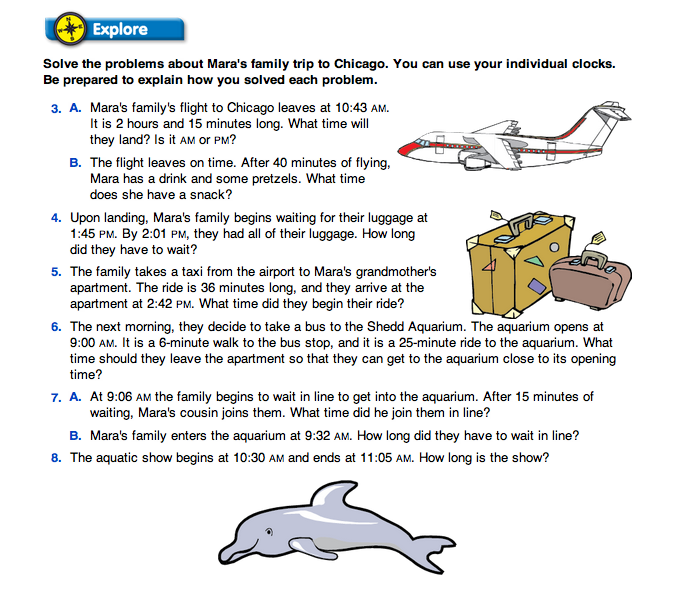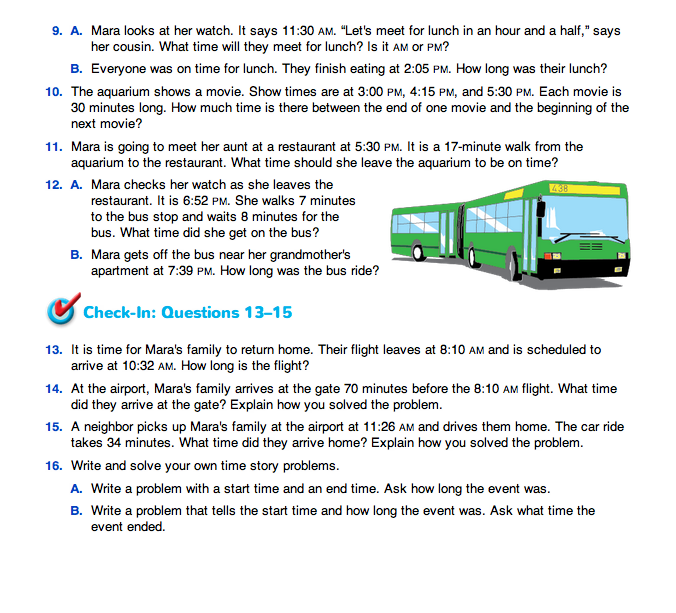Just Passing Time
Est. Class Sessions: 1Developing the Lesson
Review Time Measurement. Introduce the lesson by presenting several elapsed-time problems using three different concepts. The first problem gives the start and end time for an event and students are asked to find the elapsed time. Tell students to use their individual clocks to help them solve the following problems. Allow students to use the demonstration clock when sharing their solution strategies.
Say:
Ask students to use their individual clocks again and to imagine a different scenario. This problem gives the start time and duration of an event and students are asked to find the end time.
Say:
Present one more scenario. This problem gives the end time and the duration of the event. Students are asked to find the start time.
Ask:
Solve Elapsed-Time Problems. Direct students' attention to the Just Passing Time pages in the Student Guide. Read the introductory elapsed-time story together as a class and assign Questions 1–2 to student pairs. Students will solve the multistep problem with a partner. Have some students share their solution strategies with the class. Continue reading the vignette where Natasha and Kim discuss the strategies they used to solve the problem. Compare the strategies that students used to those of Natasha and Kim.
Ask:
Assign Questions 3–16. Students can work on these problems with a partner or individually. In some of the questions, as in Question 5, the end time and the duration of the event is given and students must find the start time. In Question 8, students are given the start and end time for an event and are asked to find the elapsed time. In Question 12A, the start time and duration of the event are given and students are asked to find the end time. In Check-In: Questions 13–15, students are given the opportunity to solve problems using each of the three contexts.
In Question 16, students are asked to write their own elapsed-time story problems. As students are writing their problems, circulate around the room and select several to be shared with the class.















